Buddhism and religious plurality in Spain
Francisco Díez de Velasco
Research project "Buddhism in Spain" sponsored by the Public Foundation "Pluralismo y Convivencia" (Pluralism and Coexistence) (Madrid)
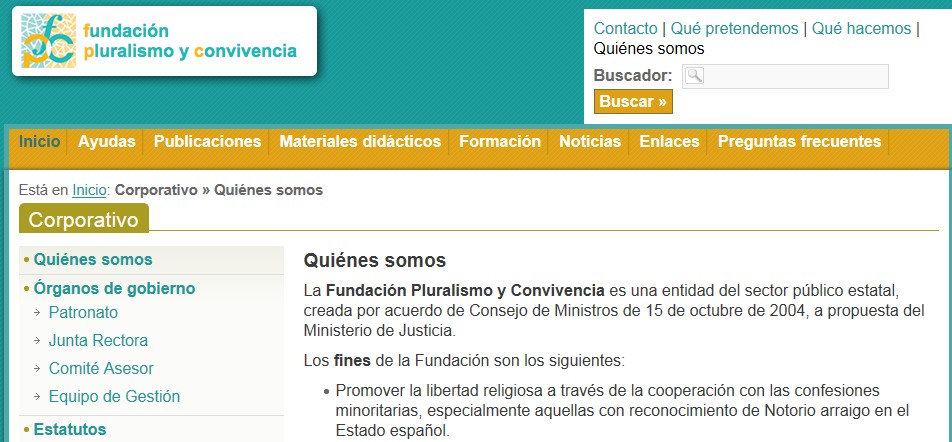
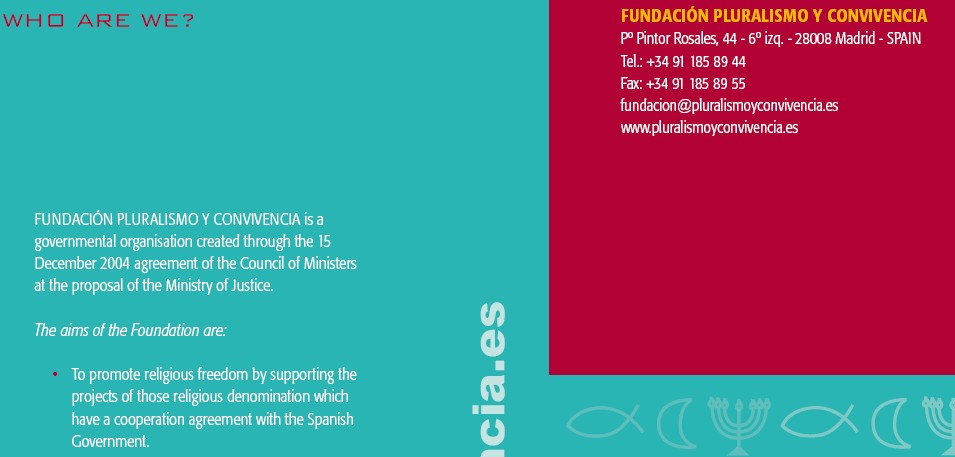
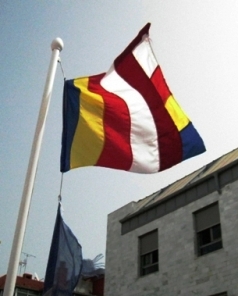
Buddhist flag in the roof of Arya Marga Sangha, LPGC
(Canary Islands)
RELIGIOUS PLURALITY as a recent option
As Spaniards... we need to remember a particular religious
history based on the secular renunciation of difference...
But also the remarkable process (under construction)
of transformation from a system based on the establishment of a national-official
religion to a multireligious one with a growing tendence to religious plurality.
What are the main religions in Spain?
| Religion | Approximate
figures |
Percentage
of population |
| Catholics
Non believers and Atheists Evangelical Christians Muslims Orthodox Christians Jehovah Witnesses Buddhists Jews Mormons Hindus New religions and others |
33-36 millions
10-12 millions 1.2 millions 1.2 millions 300,000-600,000 110,000 50,000-80,000 40,000-50,000 40,000 25,000-30,000 100,000 |
70-75%
20-25% 2,5% 2,5% 0,5-1% 0,25% >0,1% 0,1% 0,1% 0,05% 0,2% |
What is the place of Buddhism in the Spanish religious
field?
-In seventh place with more than 50.000 followers...
But... in the legal arena?
In Spain the legal-religious field may be analysed
detecting five categories, revealing a context branded by differences and
privileges.
LEVEL 1) is held by Catholicism, explicitly recognized in the Constitution in article 16.3.

Art. 16.3:“There will be no state religion. The public
authorities shall take into account the religious beliefs of Spanish society
and shall maintain consequent links of co-operation with the Catholic Church
and other faiths”.
These relations are based on international agreements
signed between the Spanish State and the Holy See in 1979. With notable
privileges in the educational sphere and in the financing.
LEVEL 2) are included three religions
(or confessions) that signed co-operation agreements with the Spanish State
in 1992, Evangelical Christians, Jews and Muslims.
The confessions with agreements enjoy privileges,
for example, a certain degree of state financing and the presence of confessional
religious education in public centres.
LEVEL 3) including four
religious groups that have been recognized by the State (the Ministry of
Justice) as "de notorio arraigo" (well known faith or clearly taken root),
but with no agreements.
-Mormons since 2003
-Jehovah’s Witnesses, since 2006
-Buddhism, since 2007
- Orthodox Church, since 2010
Buddhism is the first religion not related to the Abrahamic
heritage in Spain to be recognized as "de notorio arraigo".
Why Buddhism?
-It's a recent religion in Spain. The first stable
groups began in 1977...despite previous individual adherences to Buddhism.
But:
As we have seen... Buddhists in Spain are 50.000-80.000 practitioners (around 200.000 if we use less strict criteria of religious belonging). More than Jews, Hindus or Mormons..
There are arond 300 stable groups of practice in almost all the Spanish provinces.
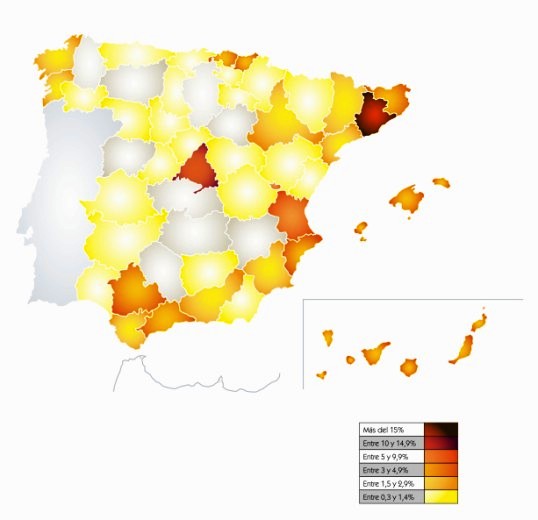
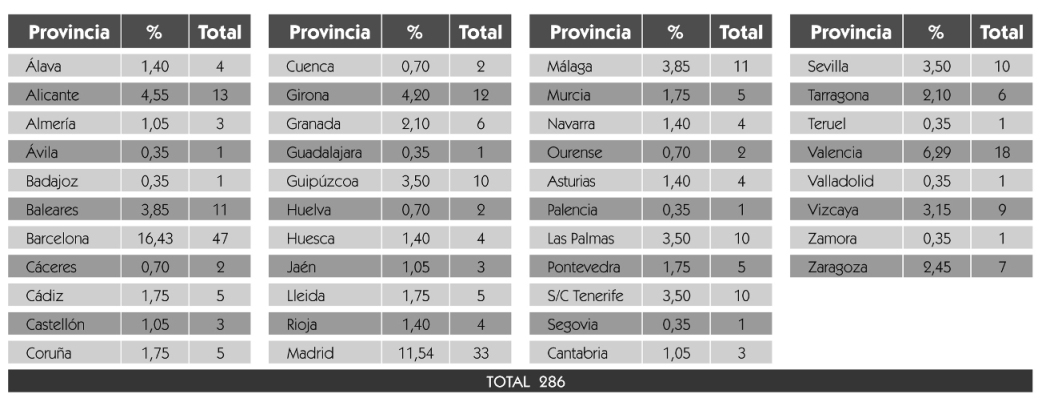

and also we detect an outstanding new Spanish Buddhist heritage...
With remarkable examples even if they differs from
the average religious monuments in Spain...
| The stupa of Benalmádena
(Málaga) (Diamondway) 33 meters high (the biggest outside Asia)
|
 |
.jpg) |
 |
.jpg) .jpg) .jpg) |
 
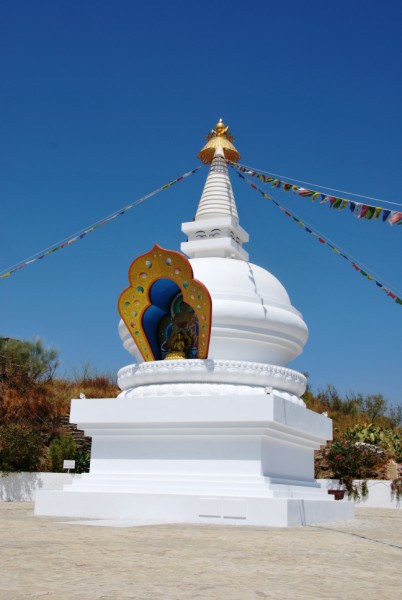 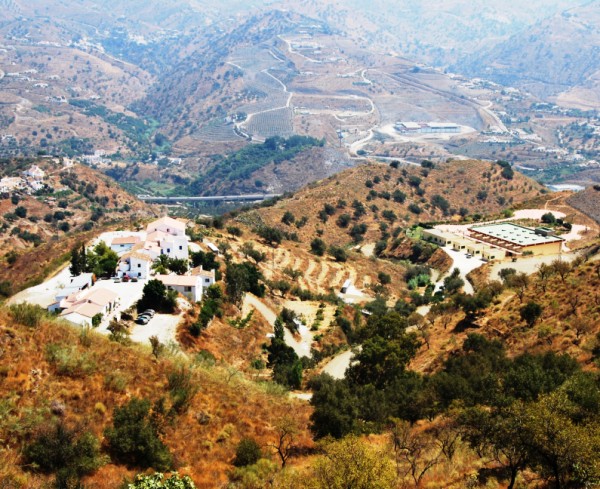 |

 |
Dag Shang Kagyu, Panillo (Huesca)
 |
 |
Retreat centre
|
.jpg) |
.jpg) |
 

 |


 |
LEVEL 4) Includes the religious
groups that are entered in the "Registro de Confesiones Minoritarias" of
the Ministry of Justice but with no subsequent agreements or recognitions.
Registration entails greater protection of the places of worship registered
and also a way of simplifying many of the varying types of administrative
procedures.
LEVEL 5) Includes groups
that, despite defining themselves as religious entities or churches, are
not registered or the registration procedure has not been fully completed
for a number of reasons (of an administrative nature) by the Ministry of
Justice. Therefore, from a legal perspective, they are not correctly visibilized
as such, but are generally regarded as cultural associations.
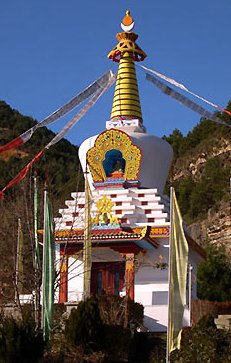
.jpg)
